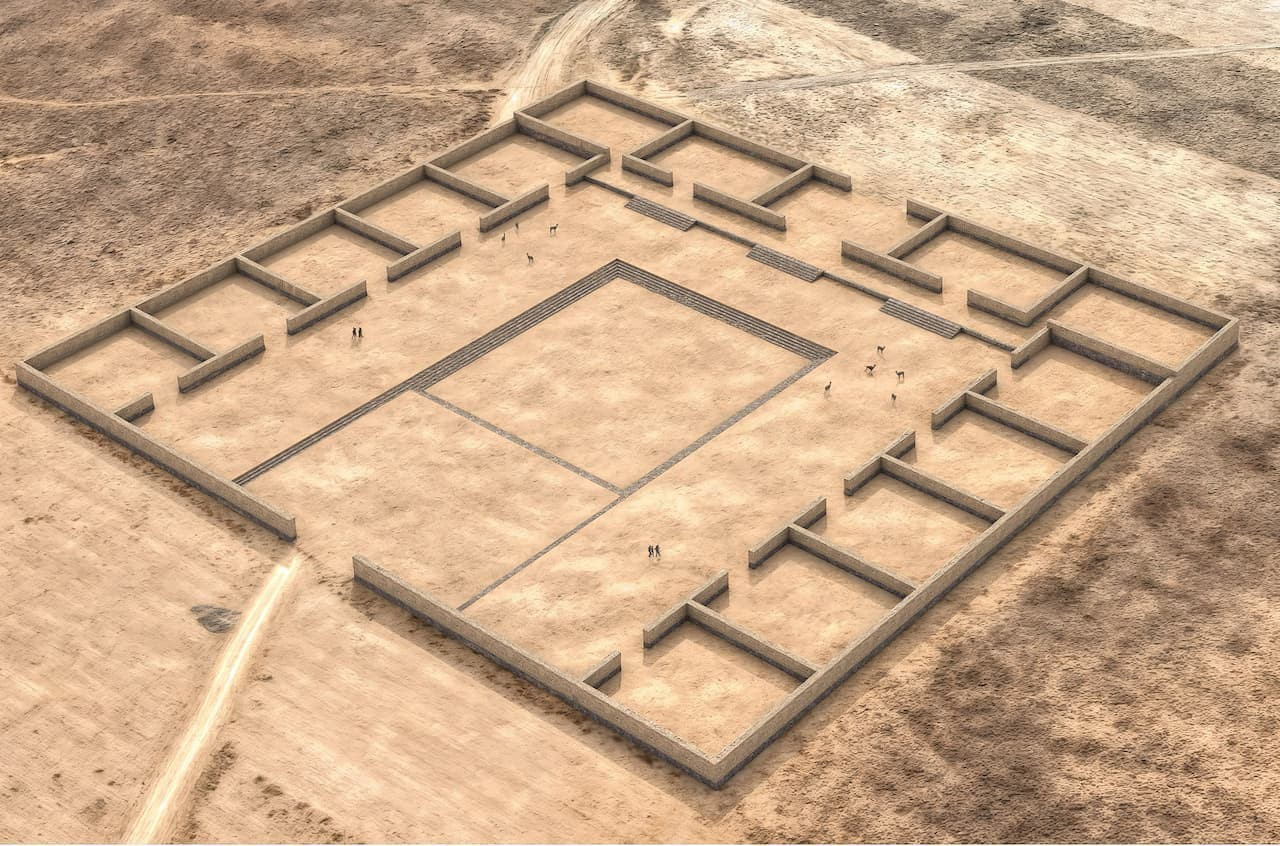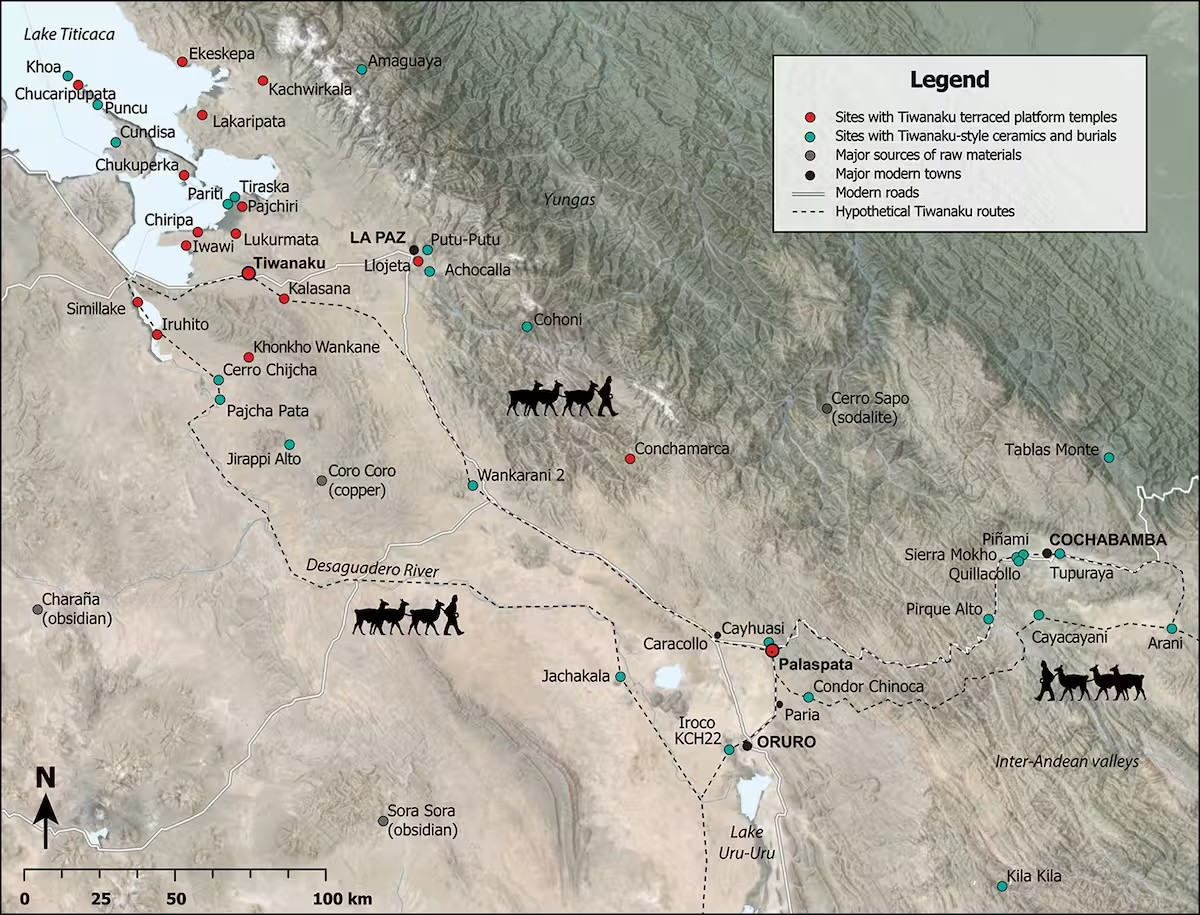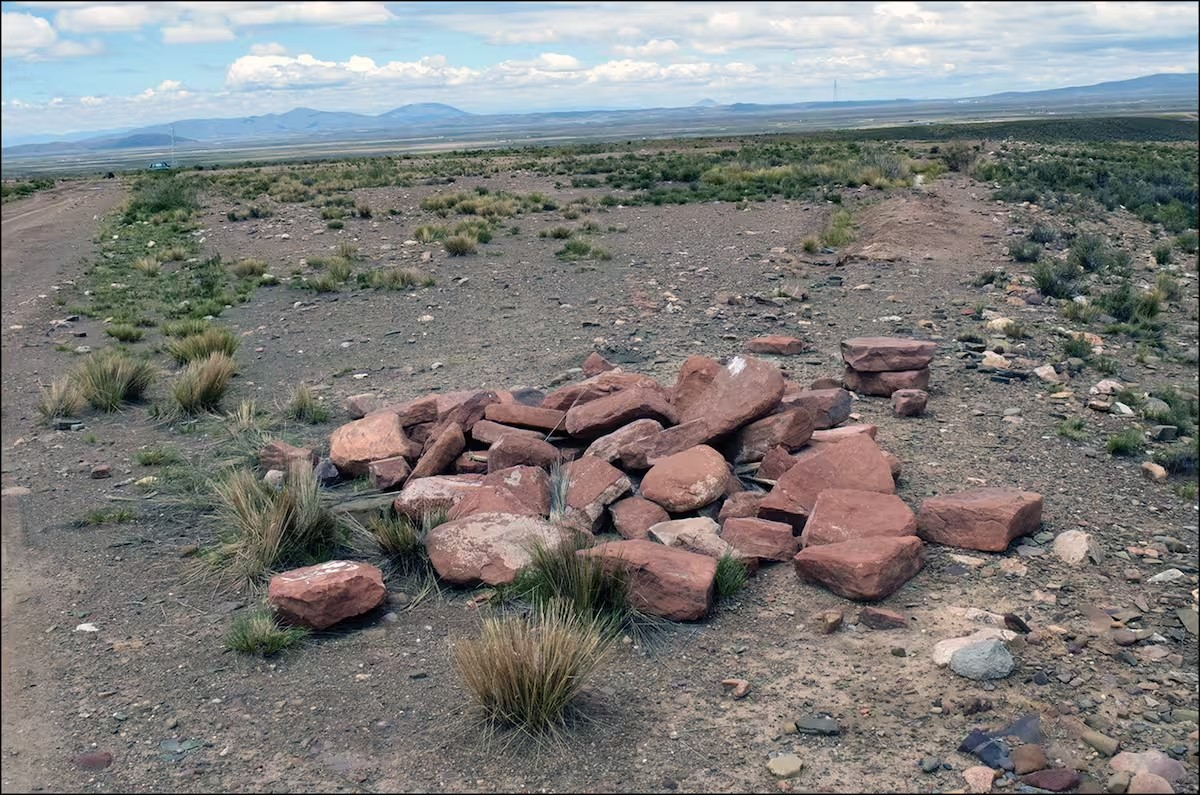On the southern shores of Lake Titicaca, in what is now Bolivia, more than a thousand years ago, one of the most powerful—yet enigmatic—civilizations of the Andes once thrived.
Known as the Tiwanaku, this culture is considered one of the earliest complex societies in the region and a forerunner of the Inca Empire. Despite their influence, the Tiwanaku mysteriously declined around 1000 CE, leaving behind a legacy clouded in mystery.
Now, a newly uncovered ancient temple by researchers from Penn State University and Bolivia may help illuminate the grandeur and influence of this lost culture that once dominated the Andean highlands.
A Discovery That Reshapes History
Published in the journal Antiquity, the find confirms that the Tiwanaku's territorial reach extended farther than previously believed. It also reveals how the civilization developed intricate economic and religious networks across an ecologically diverse region.
The temple, named Palaspata, after its surrounding area, lies nearly 130 kilometers south of the main archaeological site of Tiwanaku. Located atop a hill, it remained invisible to archaeologists for centuries, though known to local farmers.
A Strategic Location
According to lead researcher José Capriles, associate professor of anthropology at Penn State, the site’s location was no accident. Perched on high ground, Palaspata sits at a crossroads between three major trade routes: the highlands around Lake Titicaca to the north, the arid Andean plateau ideal for llama grazing to the west, and the fertile Cochabamba valleys to the east.
“This convergence of distinct ecosystems likely made Palaspata a hub of exchange and cooperation between diverse communities,” Capriles explains.
A Ceremonial Complex Hidden in Plain Sight
Using satellite imagery and drone photography, the research team digitally reconstructed the temple’s structure in 3D. The results revealed a ceremonial complex measuring roughly 125 by 145 meters, composed of 15 enclosed quadrants arranged around a central courtyard. Its alignment follows the solar equinox, suggesting a strong ritualistic function.
Although located 209.2 kilometers south of the main Tiwanaku site, Palaspata had never been fully explored—perhaps because of its seemingly unremarkable setting.
Signs of Ritual and Divine Legitimacy
The team unearthed fragments of ceremonial vessels (kerus) used for drinking chicha, a corn beer traditionally consumed during agricultural festivals. The presence of these items is significant, as maize does not grow at such altitudes—it must have been brought from the lower Cochabamba valleys.
This points to Palaspata not just as a religious center, but as a redistribution hub—a place where economic exchange was sanctioned through spiritual practices.
“In societies like the Tiwanaku,” Capriles notes, “religion was the common language that enabled collaboration across scattered communities. Even political and economic control was exercised through the divine.”
For Justo Ventura Guarayo, mayor of the nearby town of Caracollo, the discovery is more than academic. “This legacy had been completely forgotten—even by us,” he admitted.
From Forgotten Hilltop to National Treasure
Local authorities are now collaborating with the Bolivian government to preserve the site and promote it as a cultural and tourist destination. Experts like Capriles have committed to ensuring its protection and public recognition.
But as one mystery unfolds, new questions emerge:
How far did the Tiwanaku's influence truly stretch?
How exactly were their trade and religious networks organized?
Capriles remains cautious: “There’s still so much to discover. Sometimes, the clues are right in front of us—we just need to learn how to see them.”









